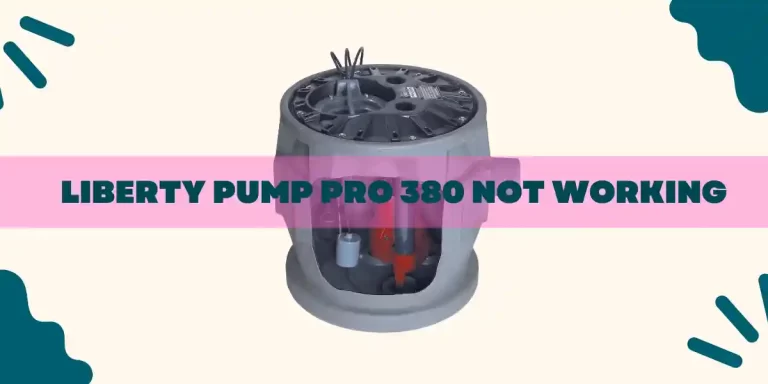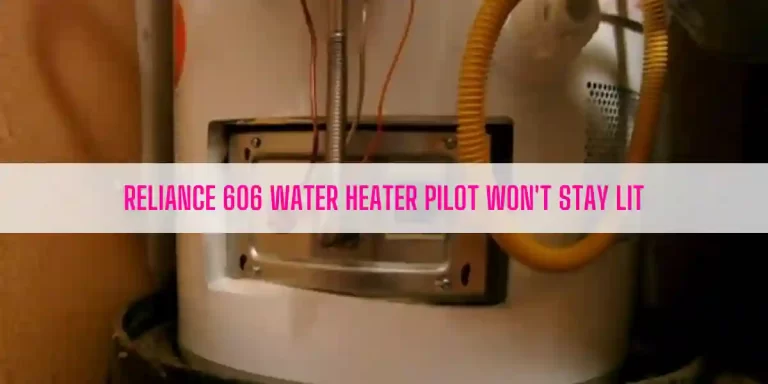This is a complete guide on EcoSmart Tankless Water Heater Maintenance.
In this article, what I am going to cover:
- How to clean EcoSmart Tankless Water Heater like its heating elements and filter?
- How to flush EcoSmart Tankless Water Heater?
- How To Reset EcoSmart Tankless Water Heater?
- And more
Without further ado, let’s dive in.
Table of Contents
- EcoSmart Tankless Water Heater Maintenance [A Step-by-Step Procedure]
- FAQs
- End-Note
EcoSmart Tankless Water Heater Maintenance [A Step-by-Step Procedure]
Minerals such as calcium and magnesium contained in the water cause scale formation on the heating elements.
You can deal with this issue in three ways- Manual Maintenance, Recirculating Maintenance, and Filtration Maintenance.
Below, I will walk you through each step and show you how to clean your EcoSmart Tankless Water Heater.
Manual Maintenance
From this chapter, you can learn how to clean heating elements on EcoSmart Tankless Water Heater.
You should perform this maintenance every six or twelve months, depending on how hard the incoming water is.
To clean the heating elements, you should have the following kits at your fingertips:
- A Phillips head screwdriver
- An adjustable wrench
- A plastic bucket
- 3 to 4 gallons of undiluted white vinegar
Once you have these pieces of equipment, follow the below step-by-step cleaning procedure.
1. Turn The Breaker Off
Turn the breaker for your water heater off at the service panel. Once you flip down the breaker, turn the round knob to ensure there is no power at the unit. If you turn off the right breaker, the LED display won’t come on.
2. Turn Off The Water Supply
Turn the water supply off that’s going into the unit. According to the national plumbing code, there should be a shut-off valve within 5 to 10 feet from the water heater.
If there is no shut-off valve, you can turn off the main water supply line to your home. Once you shut off the water supply, verify it by turning on a tap at a sink.
Turn on a tap to the hot side and leave it until water is dripping slowly. It will also help relieve pressure from the unit.
3. Remove The Front Cover
Use a Phillips head screwdriver to remove the screws. You can find those screws on each corner of the unit.
Two screws are located on the top and the other two is on the bottom of your water heater.
Next, pull the front cover and set it aside.
4. Locate Heating Elements
The unit has 1 or 2 heating elements depending on the model of your water heater.
Once you locate the heating elements, remove the two screws on top of the heating element and fold the red wires back.

5. Remove The Heating Element

Now, it’s time to remove the heating element.
Use an adjustable wrench and grip the hexagon brass located on top of the heating element.
Next, rotate it counterclockwise to unscrew the element from the copper tank.
6. Clean The Heating Element
Put the heating element in the plastic bucket and add white vinegar.
Ensure you sink the heating element into the vinegar in a way so that it (vinegar level) doesn’t rise over the hexagon brass top.
You can also pour the vinegar into the element chamber if required.
I recommend you soak the heating element into the vinegar solution for at least 3 hours. Afterward, clean the heating element with fresh water.
7. Put Everything Back Into Place
After cleaning the heating element, insert it into its place and turn it clockwise until tight.
Reset the red wires and secure the wiring with screws. Then, turn on the unit at the circuit breaker and check your water heater for leaks.
Lastly, run a few hot water faucets for 2 to 3 minutes to bleed the air from the lines.
Recirculating Maintenance
This chapter will break down how to flush EcoSmart Tankless Water Heater or its heat exchanger.
Depending on the water hardness of your area, you should flush your tankless unit once or twice a year.
To flush the unit, ensure you have the following flushing kits at your fingertips:
- A 5-gallon plastic bucket
- A recirculating pump
- Two ¾” female hoses
- 3-4 gallons undiluted white vinegar
Once you get all these pieces of equipment, go along with the following steps.
Flushing The Heat Exchanger
- Turn the electric power off to the unit at the circuit breaker.
- Close both shut-off valves for hot and cold water lines.
- Put a plastic bucket under the service line of the hot water side and remove the cap on the hot water line.
- Let the water drain directly into the plastic bucket.
- Remove the cap from the service valve on the cold water line.
- Attach a pump outlet hose to the service valve.
- Attach a drain hose to the service valve on the hot water line.
- Pour 4 gallons of white vinegar into the plastic bucket.
- Place both the drain hose and the pump inlet hose into the vinegar solution.
- Turn on your recirculating pump and let the vinegar circulate through the system for at least 3 hours at a rate of 4 GPM.
Rinse Vinegar From The Unit
- Pull out the free end of the drain hose from the plastic bucket and place it in a sink or outside to drain.
- Let the vinegar completely drain through the drain hose.
- Detach the pump outlet hose from the service valve on the cold water line. Use a bucket to catch the water that may be in the line.
- Put on the cap tightly back onto the service valve of cold water lines.
- Now, open the shut-off valve on the cold water line.
- Let the water flow through the system for 5 minutes as it continues to drain.
- Close the shut off valve on the cold water line after that period and allow your water heater to drain completely.
- Remove the hose from the service valve on the hot water line.
- Secure the cap tightly back onto the service valve.
- Turn on both the hot and cold water shut-off valves.
- Bleed the air from the system by opening a few hot water faucets for 2-3 minutes.
- Restore the power to the unit.
Filtration Maintenance
It will be better to consult with a water filter specialist or your local water company for filtration maintenance.
You will find the water filters at your local hardware stores or plumbing supply stores.
I highly recommend you to regulate calcium, lime, and sediment in the water before it enters your tankless unit.
FAQs
What size EcoSmart Tankless Water Heater Do I Need?
Whether your electric tankless unit will meet the temperature rise or not completely depends on the climate where you live.
Colder incoming water requires a larger kilowatt model. This is also true for flow rate. For example, you need to have a larger model to meet the demand for higher flow rates.
The following three criteria will help you determine what size of electric tankless unit is right for you.
- Watts- Amount of electricity you need to heat water to meet your desired temperature.
- Temperature rise- The distinction between the inlet water temperature and the outlet water temperature.
- Flow rate- Measured in GPM.
To size your electric tankless water heater, match the location on the map below.

Then, take help from the below sizing chart to choose the right tankless water heater for you.

How to reset the EcoSmart Tankless Water Heater?
Follow the below steps to reset your unit:
- Turn on your water heater.
- Hold down the round knob for 3-5 seconds until the code CE1 appears. Then, release the button.
- Keep the water running through the system for 2 to 3 minutes and check for hot water.
What happens if you don’t flush your tankless water heater?
If you don’t flush your tankless water heater timely, minerals or deposits will form in the heat exchanger or on the heating elements.
As a result, your water heater won’t heat the water sufficiently. In other words, the heating efficiency will be decreased if you don’t flush the unit.
In the worst case, it may even damage the unit by overheating the system, which will leave a dent in your pocket.
End-Note
As a homeowner, you should be aware of the water quality and its effect on the water heater.
The recommended water quality levels should be as below:
Failure to maintain your water heater will bring damage to the heating elements or the heat exchangers. And unfortunately, this damage will not be covered by the warranty.
To avoid such damage, maintain your tankless water heater following the step-by-step guide I mentioned in this article.
Happy Plumbing!
Read Also:

Eric Alvarez is the head of content on LilDutchUncle.Com. He is an HVAC guy based in El Paso, Texas, United States. He obtained his Bachelor of Science degree from the University Of Texas at El Paso. Years of experience in the HVAC field have taught him many lessons, not the least of which is that the value of quality and knowledge far exceeds any promised initial savings. He has a good standing reputation for superior skills in heating, air conditioning, hot water tanks, and indoor air quality systems.





